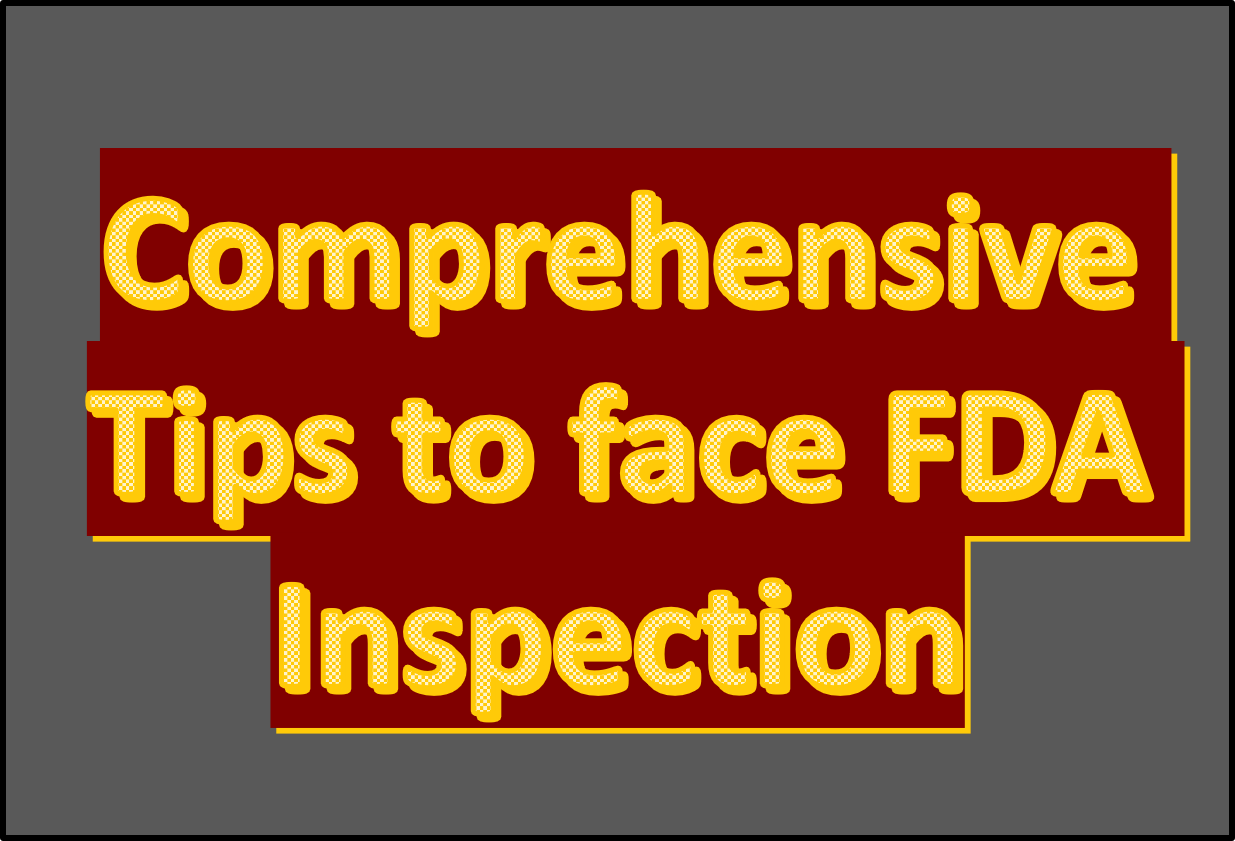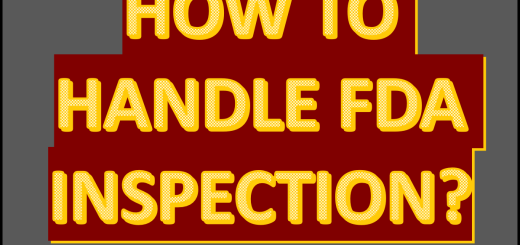Comprehensive Tips to face FDA Inspection

This article Describes about Comprehensive Tips to face FDA Inspection/Audit, Types of FDA inspection, Do’s and Don’ts during FDA inspection, Types of Listening skills.
What is mean by FDA Inspection/Audit ?
In the pharmaceutical industry, a FDA Inspection is a type of inspection conducted by a regulatory authority to ensure that a pharmaceutical company is complying with the regulations and guidelines set by the authority for the manufacture, testing, storage, and distribution of drugs and other pharmaceutical products.
The FDA Inspection may be conducted by a government agency, such as the FDA in the United States or the EMA in Europe, or by a regional regulatory body. The purpose of a regulatory Inspection is to assess the company’s compliance with the regulatory requirements and to identify any deficiencies or areas for improvement.
During a FDA Inspection, the regulatory authority will review the company’s documents, records, procedures, and facilities, and conduct interviews with personnel. The inspection may focus on specific areas, such as manufacturing, quality control, distribution, clinical trials or drug development, . If deficiencies are identified, the regulatory authority may require the company to take corrective actions, such as improving its procedures, recalling products, or paying fines.
Different Types of FDA Inspections ?
Majorly FDA will perform Three Types of Inspections as below
- Pre-approval inspection (PAI) : A Pre-approval inspection (PAI) is conducted before the FDA approves a new drug which was submitted an application to FDA to market a new product. The purpose of pre-approval Inspection (PAI) is to verify the data submitted in the application and to ensure that the manufacturing facility is capable of producing a drug that meets the FDA’s standards.
- Routine inspection: A routine inspection is a regularly scheduled inspection of a manufacturing facility that produces FDA-regulated products. The purpose of the inspection is to ensure that the facility is operating in compliance with FDA regulations and guidelines. During inspection if any observations found to the inspectors they will provide it in FDA form 483.
- For-cause inspection: A for-cause inspection is conducted when to investigate a specific problem that has come to FDA’s attention or there is reason to believe that a manufacturing facility is not in compliance with FDA regulations or guidelines. For example, if there is a report of complaints associated with a drug, FDA may conduct a for-cause inspection of the manufacturing facility.
In addition to that as an when required FDA may Perform below type of inspection also i.e.
- Compliance follow-up inspection: A compliance follow-up inspection is conducted to ensure that a manufacturing facility has corrected deficiencies identified during a previous FDA Inspection.
Do’s and Don’ts During FDA Inspections :
Do’s During FDA Inspection/Audit :
- Be professional and Confident
- Provide a comfortable place to inspector for work
- Present a cooperative attitude
- Be Decent and polite
- Be careful of what you are saying
- Answers all questions honestly
- Listen carefully to questions – Ask questions if you don’t understand.
- Be properly dressed, Neat and clean.
- Be courteous and hospitable at all times
- Appear confident in your ability to meet regulatory compliance
- Attempt to clarify misunderstanding e.g. Language issue.
- Documents should provide readily to the inspector.
Don’ts During FDA Inspection/Audit :
- Don’t Appear to be hiding anything
- Don’t do Argument with the Inspector
- Don’t Provide more information than requested
- Don’t Challenge the inspector Knowledge
- Don’t show causal approach in front of inspector
- Don’t use words while answering like I think, Usually, As I recall etc.
- Should not be defensive while Q&A with the inspector.
- Don’t Guess the answer, If you don’t know simply say it. Call right person to explain it.
- Don’t be Nervous, Instead Relax as much as possible.
- Don’t appear as being uncooperative with the inspector
- Don’t keep the inspector waiting or waste their time.
Listening Skills while interaction with the inspectors during FDA Inspection :
While listening to the inspectors, acknowledge the speaker to show that you are really listening and it can be represents as :
- Some signals that say I’m Really listening like : Straightforward eye contact
- Verbal responses and comments like ‘yes’, ‘ok’ , That’s Correct.
- Gestures such as smiling and nodding
Types of Listening as below :
- Active listening
- Passive Listening
What is mean by Active listening ?
Active listening is a communication skill that involves fully concentrating on, understanding, and responding to the speaker in a conversation.
It involves not only hearing the words that are being spoken but also paying attention to the speaker’s non-verbal cues, such as tone of voice, facial expressions, and body language.
Examples of Active listening like : Provide feedback by the listener/company employee to the speaker/inspector to confirm their understanding of the message. This feedback can include asking questions, summarizing what was he/she said, or paraphrasing to clarify the speaker’s message.
What is mean by Passive listening ?
Passive listening is a type of listening in which the listener hears what is being said by the SME (Subject Matter Expert) but is not actively engaged in the conversation.
Examples of passive listening like : This is the technique by the speakers to get them to talking to fill the void and as much as possible. in this technique SME (Subject matter expert) should understand when to stop the talking while answering.


